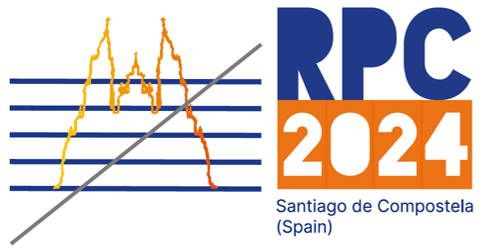Speaker
Description
Muography is a non-invasive technique that exploits the absorption and scattering features of cosmic-ray muons and produces projectional image of a target volume. We are studying different muon telescope configurations for use in tomography applications such as imaging the spent nuclear fuel dry cask, border controls of transport, and radiography applications such as to investigate cavities/shafts present in railway tunnels, archaeological cultural heritage sites.
A portable muon telescope is being developed in a modular form with four layers. Each module houses a glass Resistive Plate Chamber (RPC) of 16 × 16 cm2 active area. The RPC is sandwiched between two Printed Circuit Board (PCB) strip readout panels, with strip pitch of 1 cm, placed orthogonally to each other to trace the X and Y position of the muon hit.
The muon telescope has been simulated in Geant4 [1] and with EcoMug [2] as the cosmic-ray muon generator. The spacing between different layers in the telescope has been optimized to achieve the best possible position and intrinsic angular resolutions of 7.3 mm and 4 mrad, respectively. Using the Point of Closest Approach (PoCA) algorithm [3], the image of a Lead block of size 100 × 100 × 100 mm3 is reconstructed and the scattering angle distributions are used to distinguish the high and medium Z materials. The image reconstruction is further improved by implementing the Binned Clustering Algorithm (BCA) [4].
For building the proposed muon telescope, glass RPCs are constructed and characterized using PCB based readout panels. The RPCs are operated in avalanche mode and showed a muon detection efficiency > 95 %. The charge collection and time resolutions of the RPCs are measured. An acrylic chamber has been developed to house the RPC and the air-tightness studies have been carried out. The results and the future plans will be discussed in the workshop.
[1] https://geant4.web.cern.ch/
[2] D. Pagano et al., Nucl. Inst. and Meth. in Phys. Res. A 1014 (2021) 165732.
[3] L.J. Schultz et al., Nucl. Inst. and Meth. in Phys. Res. A 519 (2004) 687–694.
[4] C. Thomay et al., JINST 8 (2013) P10013.

